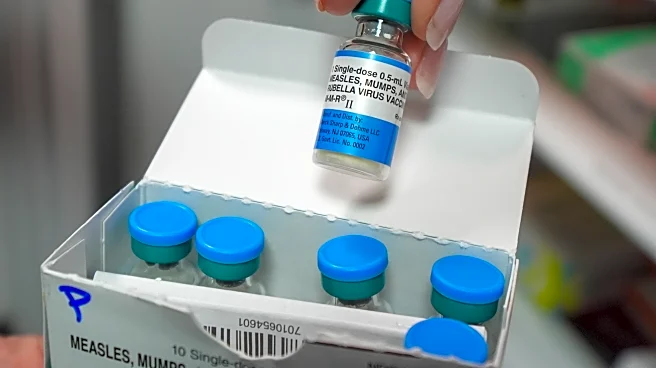A train derails and spills at least 1,000 gallons of hazardous materials in the U.S. about once every two months. Nearly half of those derailments resulted in evacuations; more than a quarter resulted in a fire or explosion since 2015, an analysis of federal derailment data showed.
And many communities along the rail lines aren’t prepared to keep people safe when it happens.
That’s the finding of an investigation by the University of Maryland’s Howard Center for Investigative Journalism that reviewed
hundreds of rail safety documents and reports and interviewed dozens of industry professionals and first responders.
The Howard Center also obtained unprecedented access to rail data collected by a network of AI-enhanced camera sensors, which allowed reporters to track shipments of hazardous materials along 2,200 miles of rail lines between the U.S.-Canadian border and West Texas.
That data, provided by a private company called RailState LLC, showed that over the last six months at least 130,000 rail cars displaying placards for hazardous materials moved along sections of rail lines stretching from Blaine, Washington, to Amarillo, Texas. Those cars passed the homes of at least 2.5 million people living within a mile of the tracks, along with more than 1,000 schools and 80 hospitals, the analysis found.
“I think it’s fair to say that most communities are probably not aware of what chemicals are going up and down the railroads in their backyard, day in and day out,’” said Jamie Burgess, a hazmat training director at the International Association of Firefighters.
First responders often lack the information, training, equipment and detailed planning needed to safely respond in the immediate aftermath of a hazmat derailment.
Fewer than one in five fire departments nationwide have their own team of hazmat specialists, according to the U.S. Fire Administration.
Confronted with a catastrophic hazmat derailment, local firefighters rely on a web of mutual support — from nearby departments, regional hazmat teams, state and federal officials, and railroad contractors — for the expertise and equipment they may lack. Yet those teams might be hours away, leaving firefighters to handle the unfolding crisis on their own.
After a Norfolk Southern train derailed in East Palestine, Ohio, in 2023, it took more than an hour for firefighters with specialized hazmat training to arrive at the scene.
“It’s usually the first time that they’ve ever dealt with something like this, and they’re overwhelmed in the beginning,” said Paul Stancil, who recently left his job as a senior hazardous materials accident investigator with the National Transportation Safety Board. “That was a problem in East Palestine. It’s a problem in almost every site.”
In 2024, railroad industry-funded hazmat training initiatives reached at least 80,000 first responders, according to industry estimates. But this represents just a fraction of the estimated 1 million career and volunteer firefighters in the U.S, according to U.S. Fire Administration numbers.
Jessica Kahanek, a spokesperson for the Association of American Railroads, said rail is the safest way to transport hazardous materials over land, adding that U.S. railroads safely carried more than 2 million hazardous material shipments in 2024.
The Howard Center analysis of federal data found 57 derailments in the last decade that resulted in the release of at least 1,000 gallons (3,800 liters) of hazardous material. Twenty-six of those derailments resulted in evacuations; 16 caused fires or an explosion.
When such derailments occur, firefighters called to the scene often face a critical problem: Many don’t know what chemicals are on board the train and what the exposure risks might be. And federal regulators have delayed the requirement to immediately supply that information.
In a letter to federal regulators this month, East Palestine Fire Chief Keith Drabick criticized the delay and urged regulators to enforce a stricter timeline on railroads.
“The 2023 East Palestine derailment in my village highlighted a critical lack of timely communication with public safety about hazardous materials information involved in rail emergencies,” Drabick wrote. Without strict enforcement by regulators, he added, “I am concerned that the derailment in my community could be repeated.”
When communities are unprepared for a hazmat spill, the consequences can be dire.
In 2012, a derailment in Paulsboro, New Jersey, sent several tank cars carrying vinyl chloride — a highly toxic and flammable chemical — plunging into a creek. One of the tank cars broke open, spewing a cloud of toxic gas that engulfed the surrounding area.
Local police and volunteer firefighters, initially confused about the chemical released, approached the wreck without breathing protection — even standing in the cloud. The initial evacuation area was too small, investigators later found, and many nearby residents spent hours in the exposure zone.
More than 700 residents and responders reported symptoms of chemical exposure.
A subsequent NTSB report found the poor emergency response contributed to the severity of the accident.
“We’ve never experienced anything of this magnitude in my entire career,” said Chris Wachter, Paulsboro’s police chief at the time of the derailment. “We were untrained for it. We were ill-prepared for it.”
Paulsboro fire officials declined to be interviewed for this story. Emergency officials for Gloucester County — which includes Paulsboro — also declined an interview but said in an emailed statement there has been “significant improvement” in the capabilities of the county’s Hazardous Materials Team and relationships with municipal first responder organizations.
Vinyl chloride represents just a fraction of the hazardous chemicals that move regularly on the rails. A Howard Center analysis of RailState’s data found that, excluding petroleum and alcohol, the top hazardous chemicals moved by train include sulfuric acid, chlorine, hydrochloric acid and ammonia — all highly toxic, and potentially lethal in high concentrations.
Vinyl chloride is a key ingredient in PVC plastic, used in construction and packaging materials. Chlorine is a widely used disinfectant and is used in water treatment plants across the U.S. Sulfuric acid and ammonia make fertilizer used on farms.
Many hazardous chemicals can move more than a thousand miles by train from manufacturer to end user, the Howard Center analysis found.
Though the disasters in Paulsboro and East Palestine prompted calls for improved hazmat preparedness for firefighters, many departments don’t have the resources.
Federal funding is a major source of training and equipment for fire departments, but it increasingly falls short of the demand. Money given out by grant programs has dramatically declined in recent years, even as costs have gone up for fire departments, said Sarah Wilson Handler, vice president for grants at Lexipol, a firm that provides consulting services to police and fire departments.
In fiscal year 2024, fire departments across the country requested nearly $4 billion in funding from the Federal Emergency Management Agency’s Assistance to Firefighters Grant Program, but the agency only made $291 million available.
Port Huron, Michigan, can’t afford to skimp on emergency preparedness for toxic chemical spills. Located on the Canadian border, the city of 30,000 sits across the St. Clair River from what locals call “Chemical Valley,” where dozens of chemical plants and oil refineries are clustered in Sarnia, Ontario.
Many of these chemicals are exported to the U.S. According to the St. Clair County emergency operations plan, it’s the second-most highly trafficked border crossing in the country for toxic chemicals.
Over the last six months, RailState data showed an average of 450 train cars with hazardous material placards passed through a mile-long tunnel that runs under the St. Clair River between the U.S. and Canada. A placard indicates the car is loaded with hazardous material or contains hazmat residue.
In 2019, a Canadian National train derailed inside that tunnel, spilling over 12,000 gallons (45,400 liters) of sulfuric acid. The response counted on a web of support from local and state agencies, railroad hazmat specialists and Canadian authorities, all under the direction of the Environmental Protection Agency.
But the future of federal support — including the grant money the county hazmat team covering Port Huron relies on — is uncertain.
President Donald Trump has repeatedly questioned the future of FEMA, and the federal disaster agency has seen severe cuts and staff departures in recent weeks.
Port Huron Fire Chief Corey Nicholson said federal dollars ebb and flow, but he’s worried about the potential for funding cuts. When grants dry up, spending on hazmat gear and training gets harder.
“Do I spend my money on the single-family dwelling fires that I know are going to happen that are high risk, high frequency? Or do I spend money on a bunch of equipment that I’ll probably never use?” Nicholson asked. “There’s so many mouths to feed and there’s only so much money to do it with.”
___
Aline Behar Kado, Paul Kiefer, Alaysia Ezzard, Ijeoma Opara, Menna Ibrahim, Molecule Jongwilai, Marijke Friedman, Josephine Johnson, April Quevedo, Tiasia Saunders and Declan Bradley of the Howard Center for Investigative Journalism contributed reporting and data analysis for this story.
___
The Howard Center for Investigative Journalism at the University of Maryland is funded by a grant from the Scripps Howard Foundation in honor of newspaper pioneer Roy W. Howard.













